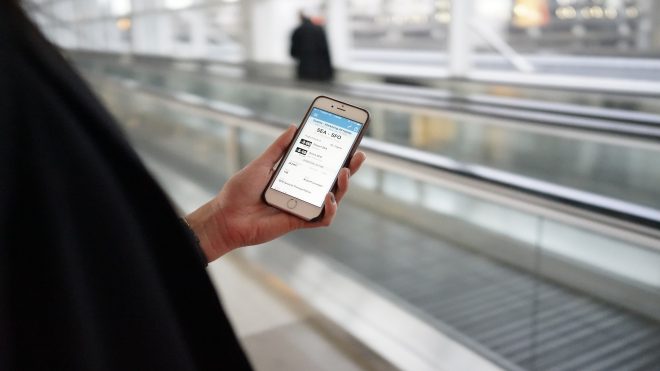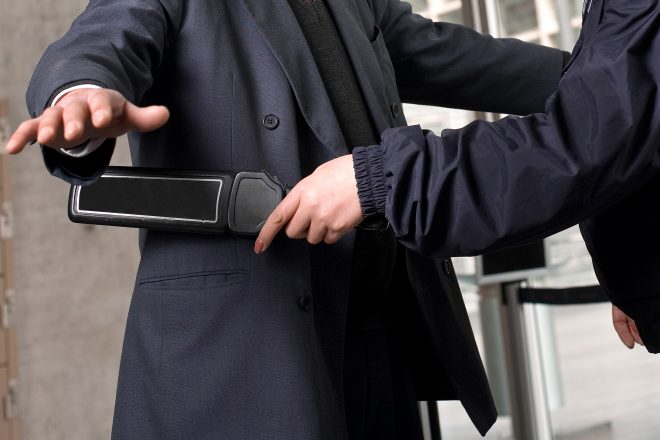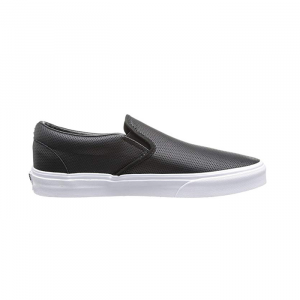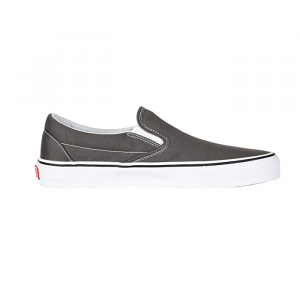From the baggage drop to the security line to the boarding gate, just getting through the airport these days can throw pitfalls at you that you never saw coming. Even if you sail through the lines, there are other things you can do to make the wisest use of your time, and money, at the airport. Here are 10 typical airport mistakes you may be making, as well as my expert tips on making it out of the airport, and onto your plane, with as little hassle as possible.
Not Downloading Your Airline/Airport App

Using your carrier’s app is important not just at the airport, but before you get there, too. Most carriers have apps you can download on your smartphone that will alert you if your flight is delayed or canceled, even before you leave for the airport. Once there, the information on the app is often more up-to-date than the arrival-departure screens in the terminal. More and more airports have developed apps that help travelers navigate the terminals with maps, lists of services, etc.
Not Checking in Online

I was flabbergasted recently at the line snaking up to the ticket counter—just to check in. (And there were even check-in kiosks!) Unless you have some kind of problem that can’t be resolved ahead of time, there’s no good reason for not checking in online.
Just have the ticket sent to your phone (via text or email link), and if you don’t have any luggage to check, you can skip the counter and head straight to the security line. (If you have luggage you’ll need to drop it off, but if you’ve checked in beforehand, this goes quickly.) Also, some airlines only let you choose a seat when you check in; if you’re flying one of these, you’ll want to check in and choose your seat as soon as possible within the check-in time (usually 24 hours).
Not Having TSA Precheck

If you fly more than just a few times a year, you’ll want to apply for TSA Precheck. It’s very rare that the precheck lines are anywhere as long as the regular lines. And because you don’t remove your shoes, laptop, and liquids, the lines move much quicker and you’re not likely to leave something behind in the bin as you scramble to get things back into your carryon.
You’ll need to fill out the application and pay a $85 nonrefundable fee, then schedule an appointment at one of the enrollment centers. That may sound like a lot of work (not to mention the money), but it’s good for five years and worth its price in saved time and aggravation.
Not Bringing Food with You

It’s no secret that airport food, whether from a grab-and-go vendor or a sit-down restaurant, comes with a hefty price tag—and the only value-add is convenience, usually not quality. And that’s not the only reason to pack a snack in your carry-on luggage: If you get held up in the TSA line and get squeezed for time, a sandwich, chips, cookies, and fruit in your carry-on can save the day.
Most food is allowed, except for liquids like salad dressings, soups, yogurt, etc. If in doubt, check the TSA’s website for prohibited food items.
Wearing the Wrong Clothing

I don’t just dress for comfort on the plane, I strategically dress to get through the line faster, too. Even if you have TSA Precheck, there will be times when those lines are closed and you end up in the regular lines, unpacking your laptop, taking off your shoes and belt, and digging out the liquids.
It pays to play it safe if at all possible. That means eliminating anything that could set off alarms when going through the body scanner, like chunky jewelry or a belt. Keep your footwear simple, too, with shoes that are quick and easy to get on and off (and don’t forget socks).
Best Airport Shoes for Women:
Best Airport Shoes for Men:
Not Taking Advantage of Courtesy Checked Bag at the Gate

If you’re a travel warrior who never checks a bag, this isn’t for you. But if you have to check a bag (i.e., you’ll need to go to baggage claim anyway), you can often check your carry-on at the gate for no extra charge. I’ve run across this numerous times, especially on domestic flights that are full and when overhead space is at a premium.
Usually the gate agent will make an announcement asking for volunteers to check their carry-ons, but I’ve asked and been given the OK. I just make sure the things I need on the plane can fit in a bag under my seat, and I have one less bag to carry around—particularly helpful if you have a connecting flight and don’t want to lug your extra bag around the airport.
Not Playing Nice

It’s not a matter of if, only when: You’re going to need someone’s help. It could be a problem of your own making, or the airline’s, or a force majeure, but it almost never pays to be angry, indignant, or whiny. Patience and a smile goes a long way when it comes to interacting with the gate attendants, flight attendants, TSA agents, and even your fellow travelers.
I’ve seen overweight bags given a pass (no punitive fee), seats changed, and special favors accommodated simply because someone asked nicely. And even if you don’t end up getting what you want (or need), you know you went about it the best way possible.
Not Buying a Pass to the Airport Lounge

If you’re not an elite flyer, or aren’t enrolled in a credit card that offers this perk, the world of airport lounges can seem like a pricey, exotic indulgence. But there are occasions—most notably if you have a long international layover—that it’s worth buying a day pass to your carrier’s airport lounge.
Not long ago, I had a seven-hour layover in San Salvador, and I happily coughed up the $25 fee just to have a quiet place to rest. It also included Wi-Fi, surprisingly good food, and a generous array of beverages, including liquor. Most U.S. airlines charge $50 to $60 for a day pass, which is a good chunk of change. But not paying for food and drinks at an airport restaurant helps offset a good part of that cost.
Sending Personal Information Over the Airport Wi-Fi

Thankfully, more airports are acknowledging that free Wi-Fi isn’t just a convenience for travelers, it’s a necessity. And that’s a good thing! But never forget that “free” doesn’t mean “safe”: Public Wi-Fi networks aren’t secure, so whatever you do, don’t type in personal information—passwords, IDs, etc.—or you could return from your trip only to find your Facebook has been hacked and your bank account drained.
Not Marking Your Luggage

You’ve been there, done that, and now you’re almost home. All that’s left is to grab your luggage from baggage claim. And one by one here they come, an endless stream of suitcases that look more or less the same. Save yourself the hassle of looking at each bag as is it goes by marking yours with a brightly colored tag. Not only will it have your contact info should your luggage go missing, but if all goes as planned you’ll be able to spot yours in a quick second and be on your way.
More from SmarterTravel:
- The 10 Worst Airports for Flight Delays, Ranked
- The Best Airport Perk You’re Not Using
- How to Check Flight Delays Nationwide, in One Map
Editor’s note: This story was originally published in 2016. It has been updated to reflect the most current information.
We hand-pick everything we recommend and select items through testing and reviews. Some products are sent to us free of charge with no incentive to offer a favorable review. We offer our unbiased opinions and do not accept compensation to review products. All items are in stock and prices are accurate at the time of publication. If you buy something through our links, we may earn a commission.
Related
Top Fares From
Today's Top Travel Deals
Brought to you by ShermansTravel
Peru: 8-Night Trip, Incl. Machu Picchu...
Great Value Vacations
 vacation
$2083+
vacation
$2083+
15-Night Transatlantic Cruise from New York...
Norwegian Cruise Line
 cruise
$928+
cruise
$928+
Shop and Save with Country Inns...
Patricia Magaña
 Hotel & Lodging Deals
Hotel & Lodging Deals










